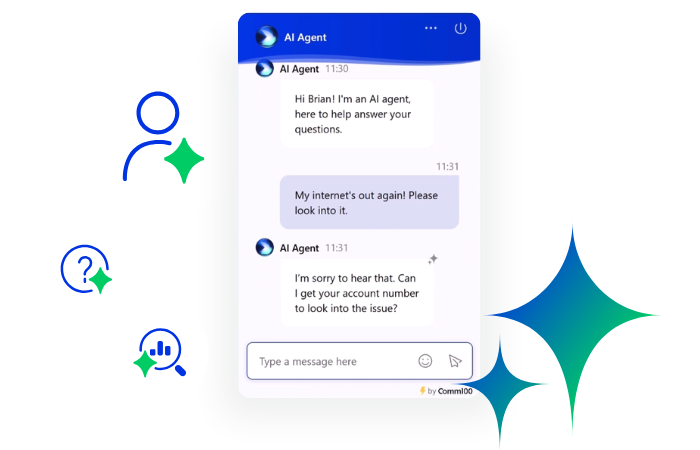Let’s be honest, companies do not send out newsletters promoting massive “wins” and provide huge commission checks when an internal team manages to “save” a customer. Their focus is usually on growing the business, and that really only happens when you gain new accounts.
8 out of 10 marketers of global companies actually agree that a much better strategy is retention, but their organizations are still focused on customer acquisition. However, costs to acquire new accounts are not inconsequential — nor is there any guarantee that the investment will actually lead to a new account.
If we look at the Cable and Telco markets as a case in point, they are shedding massive numbers of accounts on an almost daily basis due to residential homes pursuing cord cutting strategies over long-term contracts. While cable operators employ “retention specialists,” these are generally in place as a last resort. These companies could be better served by planning out and delivering services that their customers want, and aiming to deliver them in a smoother, more frictionless way.
In this article, we’ll be exploring both the process of customer journey mapping and customer experience mapping, explaining the types of steps involved for each. First, let’s go through what a journey map is and how to complete one.
Download now: Improve Your Customer Experience: An Action Plan for CX Success
This eBook contains best practice tips from the CX field, encompassing methodologies like Six Sigma to ensure your pathway to customer experience improvement is clear and straightforward.
Download Now
eBook
What Is a Customer Journey Map?
The sales cycle is a well-known and long used tool in business. It takes a customer from prospect all the way to paying subscriber and tries to account for all of the different requirements and deliverables along the way. The focus in the sales cycle is very much on overcoming opposition and conversion.
A customer journey map is similar, yet different. The journey map itself is a simple representation of all the places where a customer might come into contact with your company. The focus can be very specific (a particular group, team or service), or more generic and company-wide.
A key point to keep in mind with journey mapping is that the more touchpoints you have, the more complicated the map becomes. Because of this, it sometimes makes more sense to have smaller, more specific maps for individual services and products — although “cradle to grave” maps are also useful.
A journey map talks about the different questions and feelings that a customer has at each touchpoint. It tries to give an idea of what the intent of the customer is, and specifically, what they are trying to achieve.
There is never one single way to approach journey mapping. Maps can look radically different from organization to organization, and even from team-to-team within the same organization. The important thing is not HOW it looks, but rather WHAT it does — namely, giving you a quick and easy way to understand how the customer feels at each stage.
Continuing our conversation about the cable customer, a journey map for them would look something like this:
- Customer receives information in post/mail or in person at shop or via a television advert about cable services & new promotion/deal.
- Customer contacts cable company to get the deal and is initially shocked at install fee, but based on monthly rate, agrees to go with company for service.
- Internet cord-cutting services and disrupters like Plex/Netflix/Sling TV are launched or made available in local market. Customer prices out services and packages based on “special new customer rate”, but finds price is still better with cable company.
- Special rate promotion expires, customer contacts company to check prices and offers, and is shocked to find the price has almost doubled! Attempts to negotiate a better rate as an existing customer and is transferred to a Tier 2 agent who says there is nothing that can be done, but offers 20% discount to stay with service. Customer agrees but is disgruntled and starts to complain to friends and family.
- Customer calls back again when next bill arrives… along with another letter from the SAME company offering an EVEN BETTER deal for NEW customers ONLY. Customer is now incensed and wants the same deal.
- He is told this is impossible and is transferred to a “retention specialist” when he starts talking about cancellation.
- Retention specialist informs him that by taking advantage of the 20% discount, the customer is tied into a 6-month term or would have to pay a penalty fee.
- Customer does the math again and realizes that by canceling and moving services to another company, he would still be further ahead, even after paying the penalty fee. Customer leaves the company and moves all of his services away — including Internet and Mobile phone services, causing the company to not only lose the cable business but also the other bundled services.
- Customer tells many people about the issues and problems he experienced with the company and even writes a blog post about his experience which he shares with the world!
As you can see on the map, there are quite a few different touchpoints, even for this simple example. At each stage, the company has an option in how they handle the interaction and how they leave the customer “feeling” subsequently.
Moving from a Customer Journey Map to Customer Experience Mapping
While the journey map provides a simple interface for all of the touchpoints between a customer and a business, it does not really focus on these touchpoints from a specific point of view.
The experience cycle serves to complement the sales cycle. Where the sales cycle focuses on conversion and the overcoming of opposition from a business’s point of view, the experience cycle focuses on the relationship between a business and its customer with the goal of fostering a long-term and ongoing relationship.
The experience cycle can be broken down into several key milestones, as follows:
- Connection — this is the first opportunity that a business has to make a “good first impression” on a potential customer.
- Exposure — this is where the customer learns about what is and isn’t possible with the product or service, even if only in a theoretical manner.
- Experience — now the customer pushes the boundaries of the product or service. They test out and use all of the features, especially those that are most useful to them.
- Mastery & Activation — at this stage of the process, the customer is an expert. They are also a strong proponent of the service and if their journey has been good, they can help to advocate its use in the industry.
Each of the touchpoints of the customer journey can be similarly mapped to a customer experience. If this exercise is done, it’s possible to see how best to influence a customer in the appropriate direction. This frameshift changes the focus from a single “sale”, to a series of relationships that yield ever-increasing returns.
Going back once again to our cable customer, let’s take a look at some of the possible touchpoints that could possibly have been mapped differently to get a different outcome:
- The initial advertisement offering the promotion was enough to gain interest, so let’s leave that alone. However, the promotion should include the installation fee so that the initial “sticker shock” is further reduced.
- The greatest benefits would be when the customer calls for the initial price adjustment, post promotion period. The fact is that they should:
- Not have had to call in at all. While the promotional period is an incentive to attract new business, a follow-up letter near the completion of the period either offering an extension at the reduced rate or a significant “loyalty” discount for valued customers would have not only maintained the customer, it would have probably increased their Activation. Alternative strategies could have included offering a reduced discount for increased services. By ensuring that the customer does not have to call in the first place, you are moving in the right direction.
- Alternatively, if they do call, have them immediately speak to the person that can best speak to them and offer them the “final deal” — no games, no phone tag, and no hidden gotchas.
- This focus on honest and improved service up front is what will move the customer to a true advocate of the service.
- A good product package, a good interface, a good support service, and other well-executed touch points enable a similar cycle of experience.
Tools to Create Your Journey
While the ideal goal is a lovely graphical representation of all of the steps that a customer takes from Point A to Point V (with stops along the way at Points M, Q, and Z), you do not have to start with pretty pictures, videos, and storyboards.
Spreadsheets might not be the sexiest tools out there, but they are really simple, easy to use and they are a tool that everyone is reasonably familiar with. Start with a simple Excel sheet to plug in each touchpoint and the teams/processes involved. Remember, it’s just a tool to help you get a handle on how your customers are interacting with you.
The goal of your map is that it needs to be customer focused and from the customer’s perspective. Ensure that the story remains front and center in the mind of everyone viewing it. You can always get a designer to produce graphics afterwards.
Building a Map
Whenever you’re building a customer journey map it’s important to not only include the key stakeholders, but also ensure that the right touchpoints are being included.
With your stakeholders, focus on collaborative sessions where everyone is involved in the actual data gathering, map building, and analysis process. Ensure that a “touchpoint inventory” is conducted to gather all of the different areas where customers interact with the company through their lifecycle, and continue interviewing stakeholders to ensure that the inventory is complete and comprehensive.
Start small — focus on a specific application or service in its current state versus looking at the customer from cradle to grave. Each of these individual scenarios can, at a later stage, be added to a larger framework as you continue building your maps throughout your organization.
The Journey Continues
You now have some idea of how to build a customer journey map and how it ties into customer experience mapping. The key concept to realize is that customer interactions build on each other. If that is understood, then the rest comes somewhat naturally.
It is very important to realize that a journey is not always in a straight line. In the sales cycle, for example, someone might jump straight from awareness to purchase, whereas others may spend days, weeks and even years researching, price matching and comparing features and benefits.
Similarly, with customer journey mapping and experience mapping, it is very important to try and look at all of the different interactions and interrelationships. What might seem simple and logical to a customer veteran might be completely obtuse to a neophyte, and it’s important that your map takes all eventualities into account.
Download now: Improve Your Customer Experience: An Action Plan for CX Success
This eBook contains best practice tips from the CX field, encompassing methodologies like Six Sigma to ensure your pathway to customer experience improvement is clear and straightforward.
Download now
eBook







